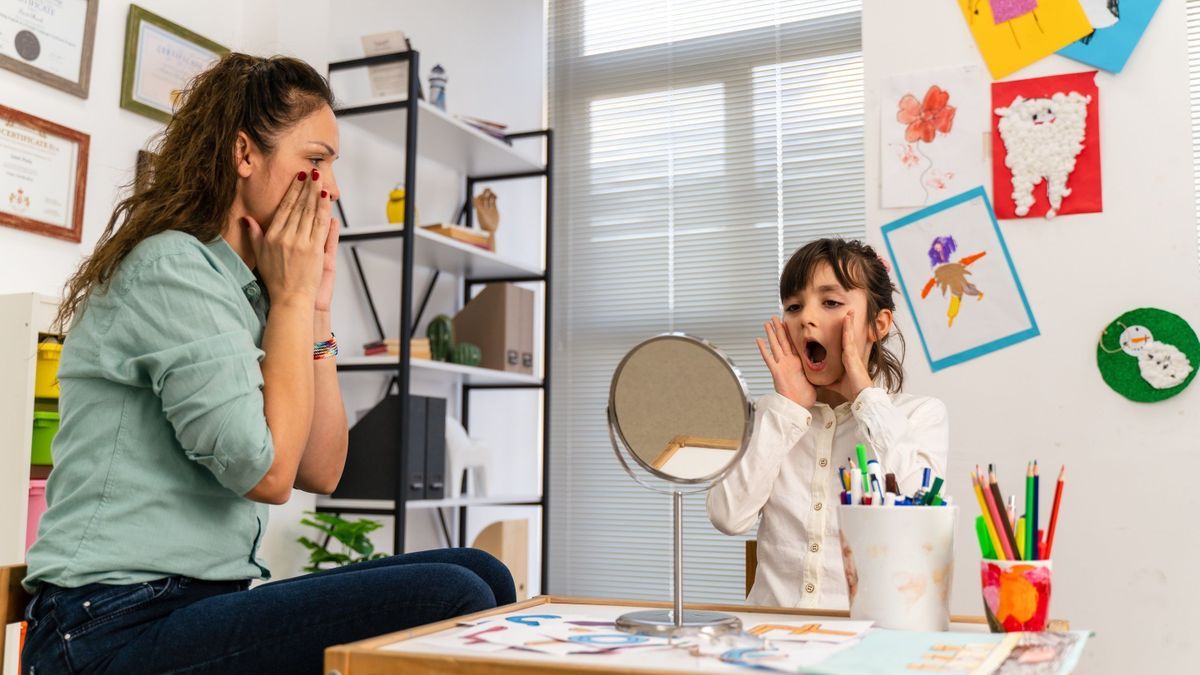
Nearly 1.25 million children or adolescents aged under 18 consulted a speech therapist in 2019, or nearly 9% of all minors, reveals a Drees report which only takes into account consultations carried out in a city office. Oral language disorders and written language disorders appear to be the two most frequent reasons for consultation within this population.
The Department of Research, Studies, Evaluation and Statistics (Drees) provides an initial inventory of children and adolescents’ recourse to the speech therapist for an assessment or rehabilitation linked to a specific disorder. This report, which focuses on the year 2019 – the years 2020, 2021 and 2022 were not taken into account due to the health crisis – reveals that nearly one in ten minors have already consulted at least once a speech therapist in a city practice. Note that hospital consultations were not included in this data, but concerned some 4,500 children in 2019. In total, nearly 1.25 million children used this type of consultation. consultations, for a total of 21 million consultations in 2019.
Boys more concerned
The study, which is based on the National Health Insurance Inter-Scheme Information System of the National Health Data System, indicates that one in eight children, or 162,000 minors, consulted a speech therapist for an assessment. , without follow-up support. Taking these data into account, more than a million children or adolescents were cared for by a speech therapist during the year, or 7.5% of this age group. The Drees specifies that more than half of these children are aged 6 to 10, and are in primary school, but also that boys are more concerned by this care, around 59%, compared to 41%. for their female counterparts.
Regardless of their age, boys used a speech therapist more in 2019 than girls. But it appears that they also consult at an earlier age. The Drees indicates that boys consult more at the ages of 5 and 6, while girls use it more at 8 and 9 years. As for the reasons for consultation, they are diverse and varied, and also differ depending on the age of the children. “The reasons for appeal are intrinsically linked to age, in particular written language disorders which manifest themselves especially from the arrival in primary school, at the moment when the child actually begins learning to read and speak. ‘writing. Each age group, which can be linked to school level, has specific characteristics“, we can read in the report.
Treating oral language disorders
“Prevent, evaluate and treat, as early as possible, through rehabilitation acts constituting treatment, voice, articulation and speech disorders, as well as disorders associated with understanding oral and written language. and his expression; to provide learning of other forms of non-verbal communication enabling these functions to be completed or supplemented“. This is what speech therapy consists of according to article R.4341-1 of the Public Health Code, relayed by the Drees, although the scope of this health profession has evolved considerably over the course of in recent years. According to the National Federation of Speech Therapists (FNO), “the word speech therapy was born in Europe in 1828, during the creation (…) of the Orthophonic Institute of Paris, whose goal was the recovery of speech and in particular stuttering.
This study also reveals that oral language disorders constitute the primary reason for consultation with a speech therapist, at 42.1% for all minors. These are mainly speech delays, but they can also involve communication disorders. In detail, children aged 3 to 5 who consulted a speech therapist in 2019 are more affected by oral language disorders, at 83%. The second most common reason concerns written language and graphics disorders (35.1%), including dyslexia and dysorthography. The latter seem to affect adolescents aged 11 to 17 more (56.6%).
Communication and language disorders in motor, sensory or intellectual disabilities are among the other reasons for consultation (7.1% of all minors taken care of), ahead of logical-mathematical disorders (4. 8%), articulation and swallowing disorders (3.7%), dysphasia (3%), or even stuttering (2%). The final observation is that girls and boys are not supported for the same reasons at the same age, with the exception of the 3-5 year old age group. Before the age of 3, boys consult more for oral language pathology than girls (32.5% versus 18.2%), while girls are more concerned by logico-mathematical disorders between 6 and 10 years than boys (6.6% versus 2.5%).
Although it is difficult to estimate the evolution of the incidence of these disorders, a publication from the Ministry of Health dating from 2016, updated in 2022, estimates between 4% and 5% the share of children in a age group affected by developmental language disorders, i.e. one child per class. In a practical guide devoted to learning difficulties and disorders in children aged at least 5 years, the ministry indicates that “dyslexia affects at least 3 to 5% of children“, and more boys. As for dyscalculia, it affects 2 to 6% of children, but “its diagnosis is less often made“.
